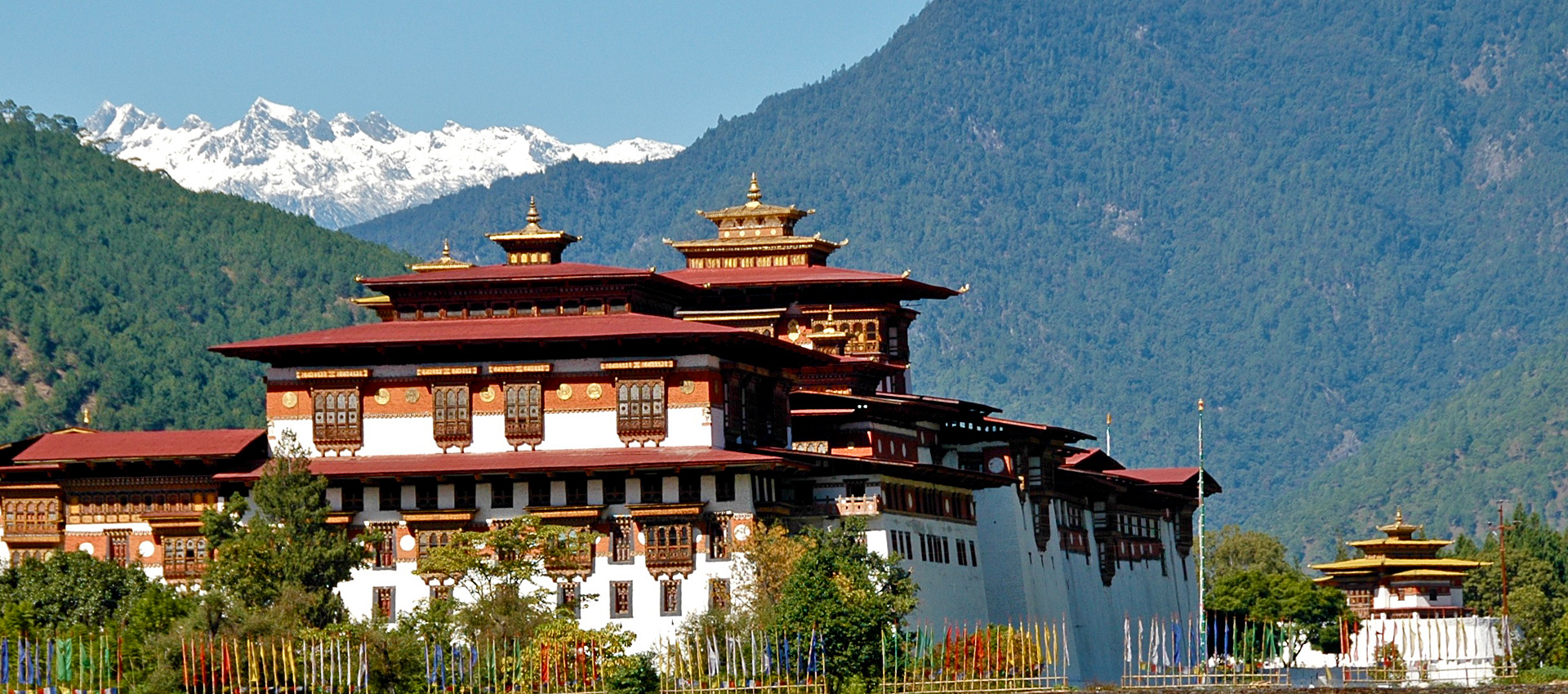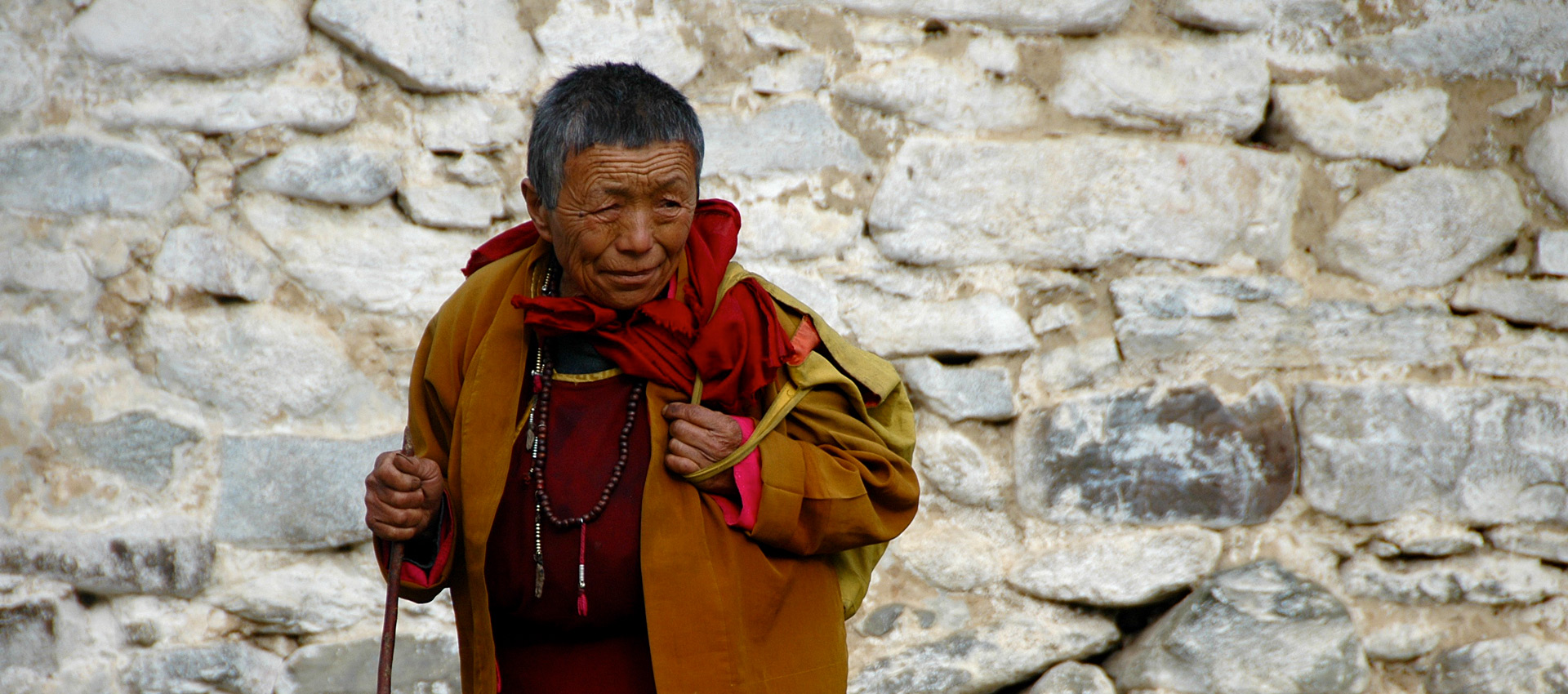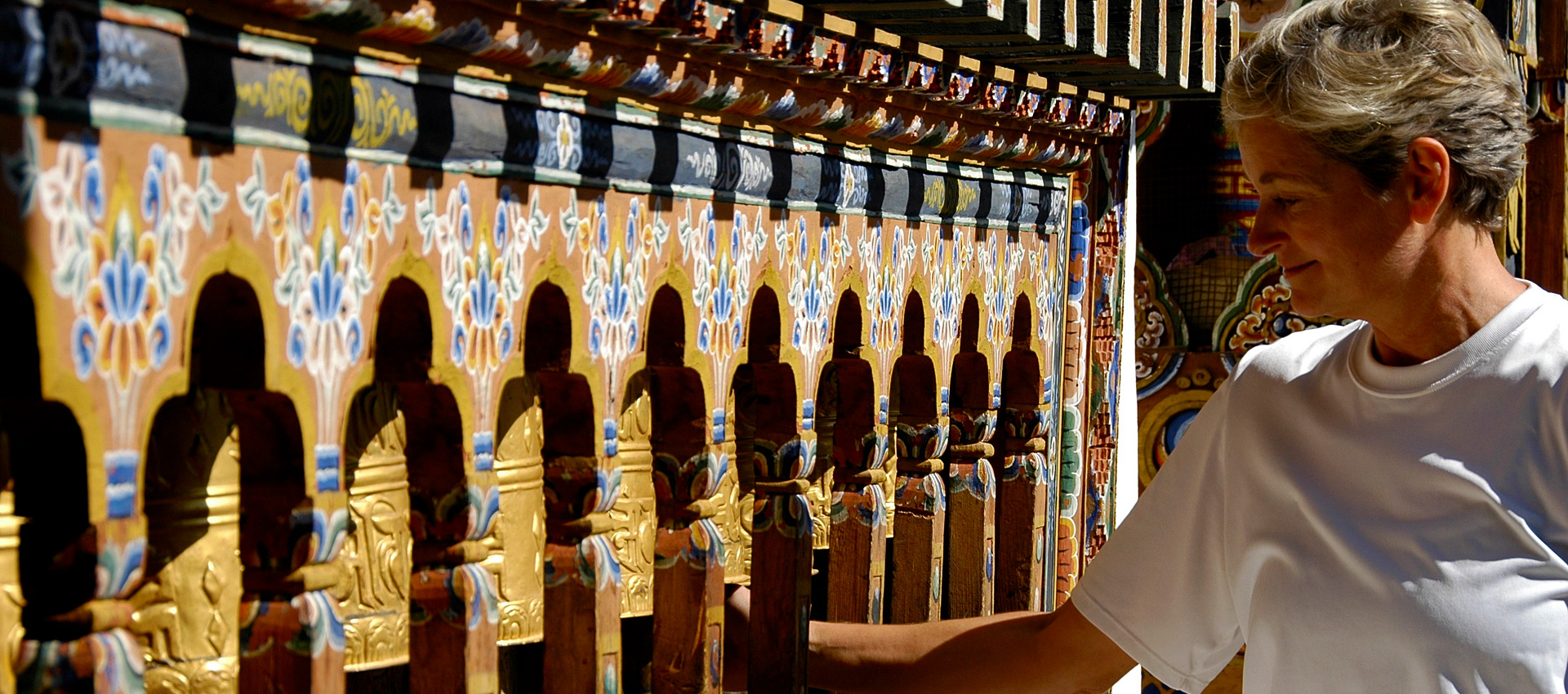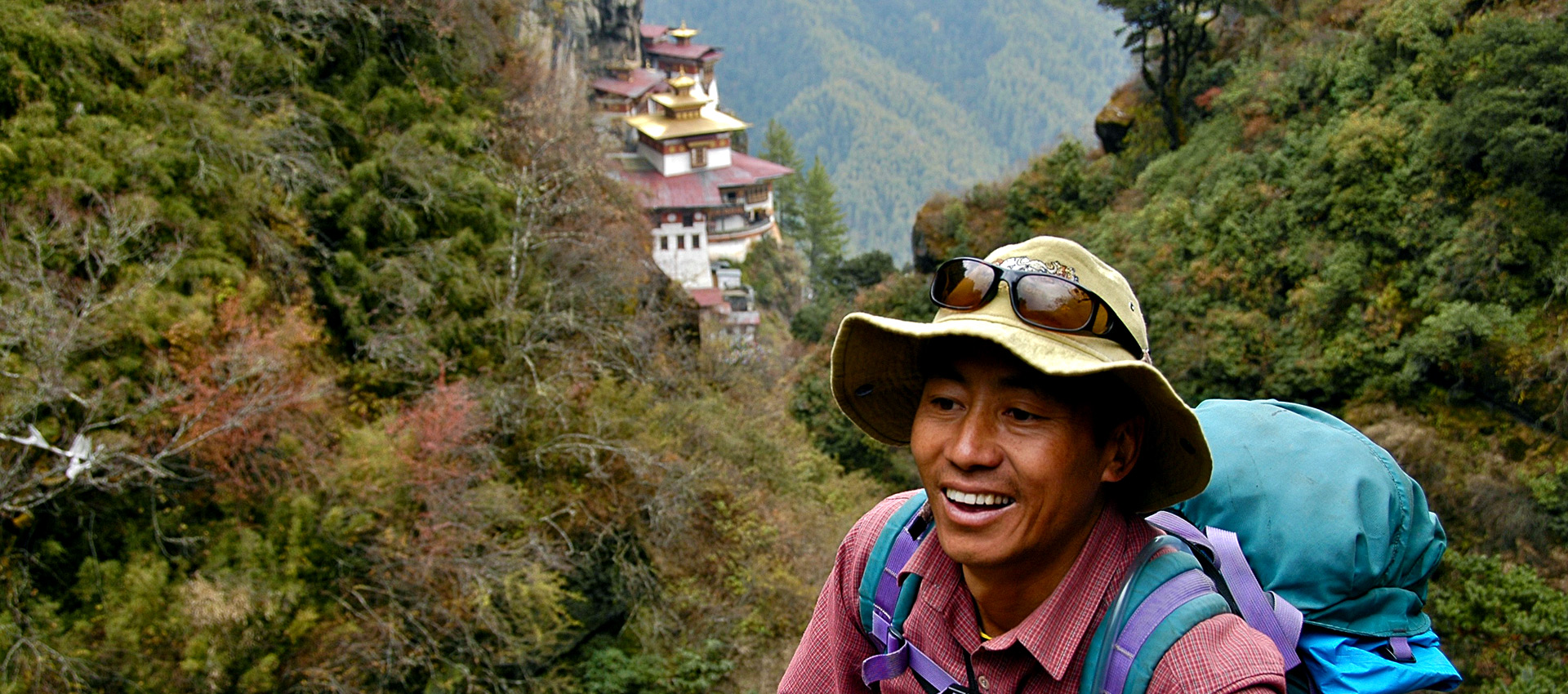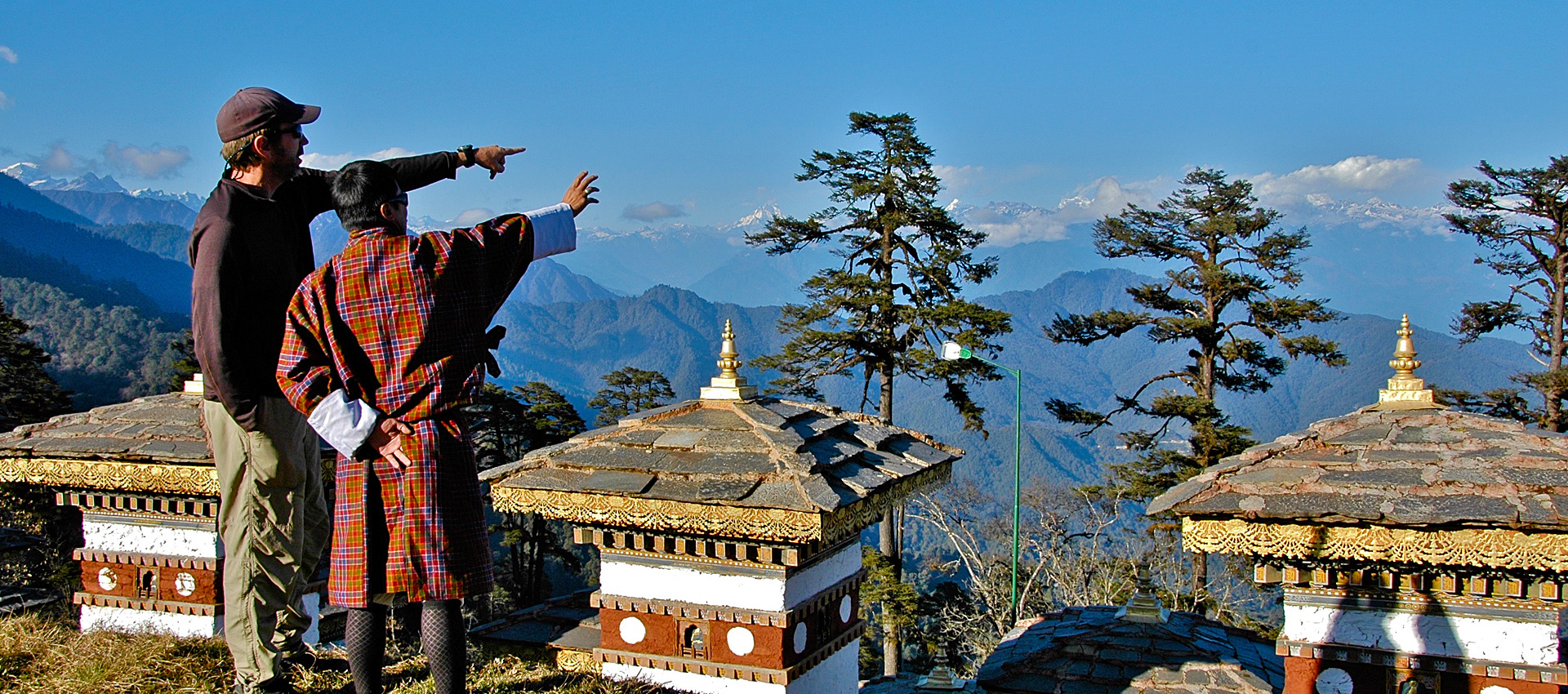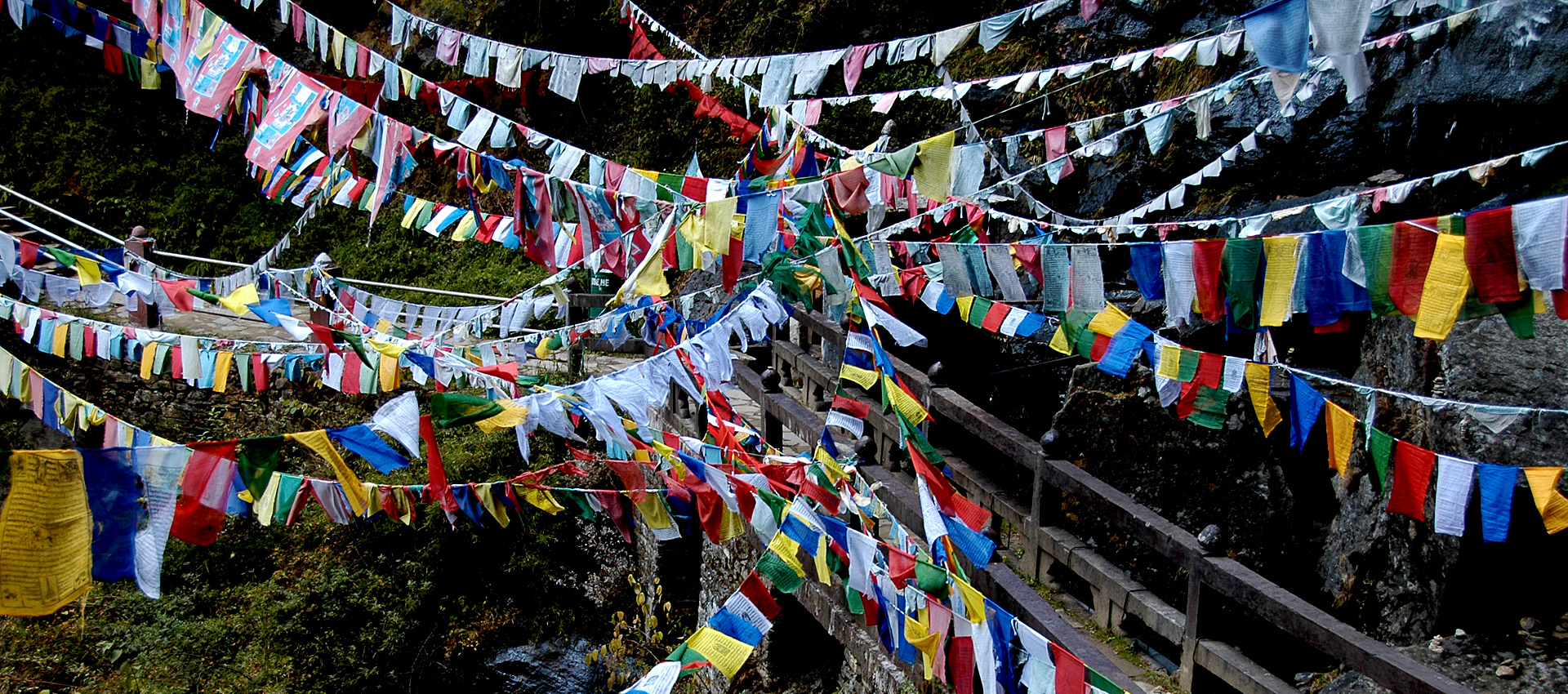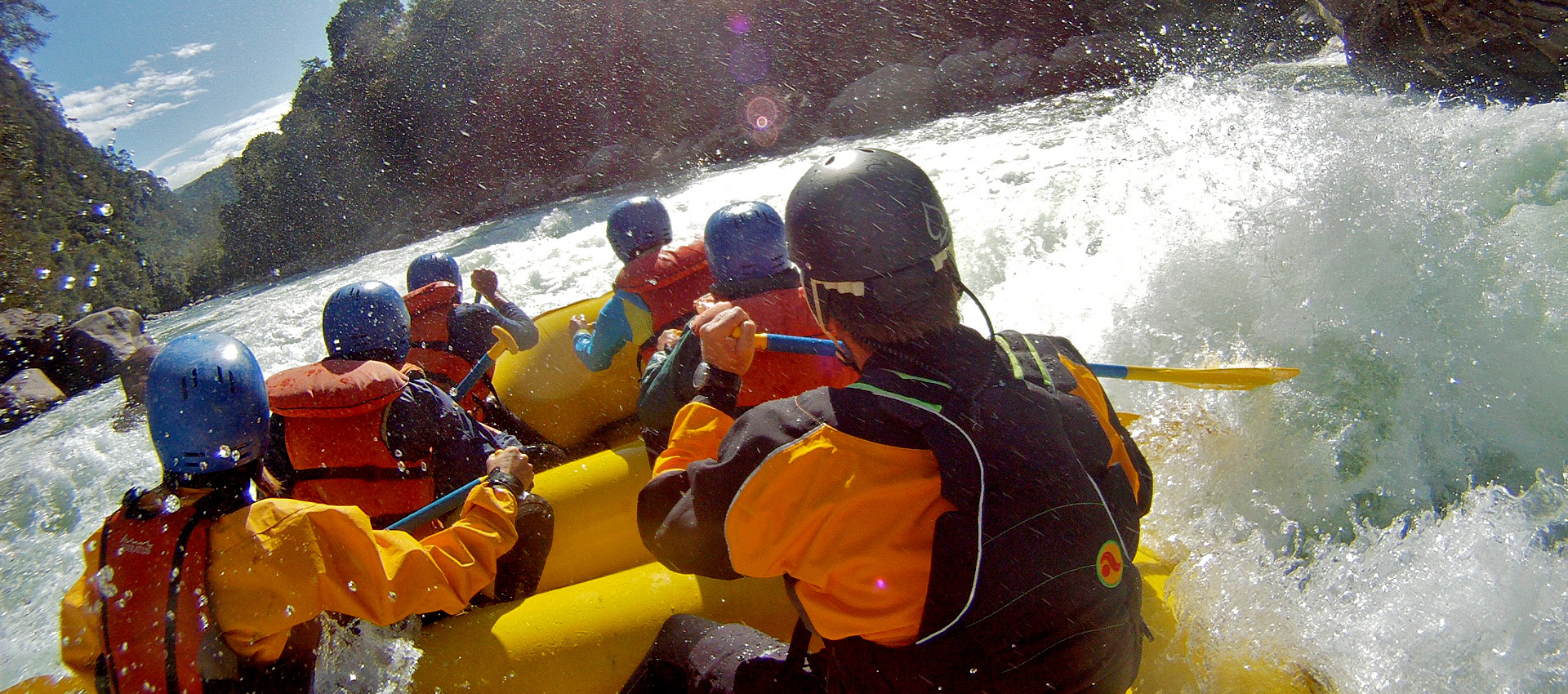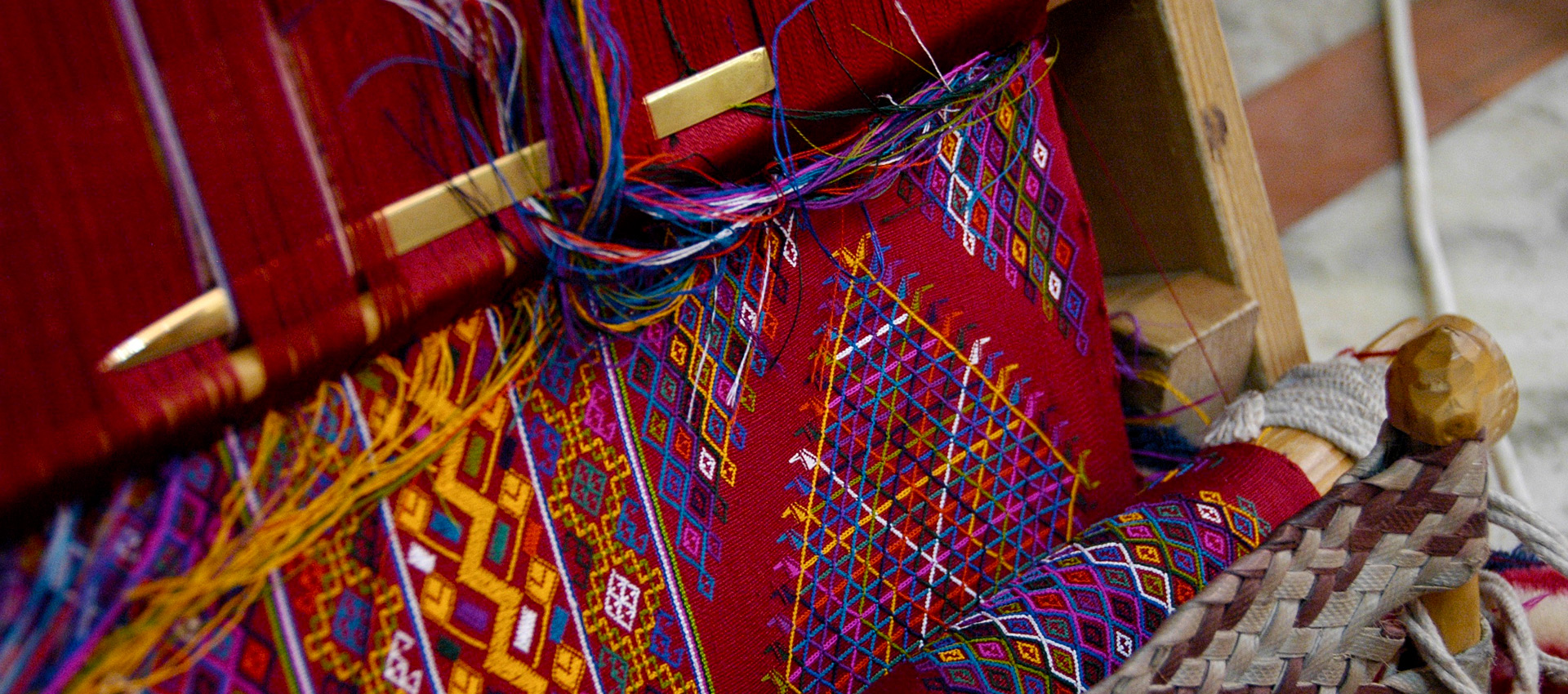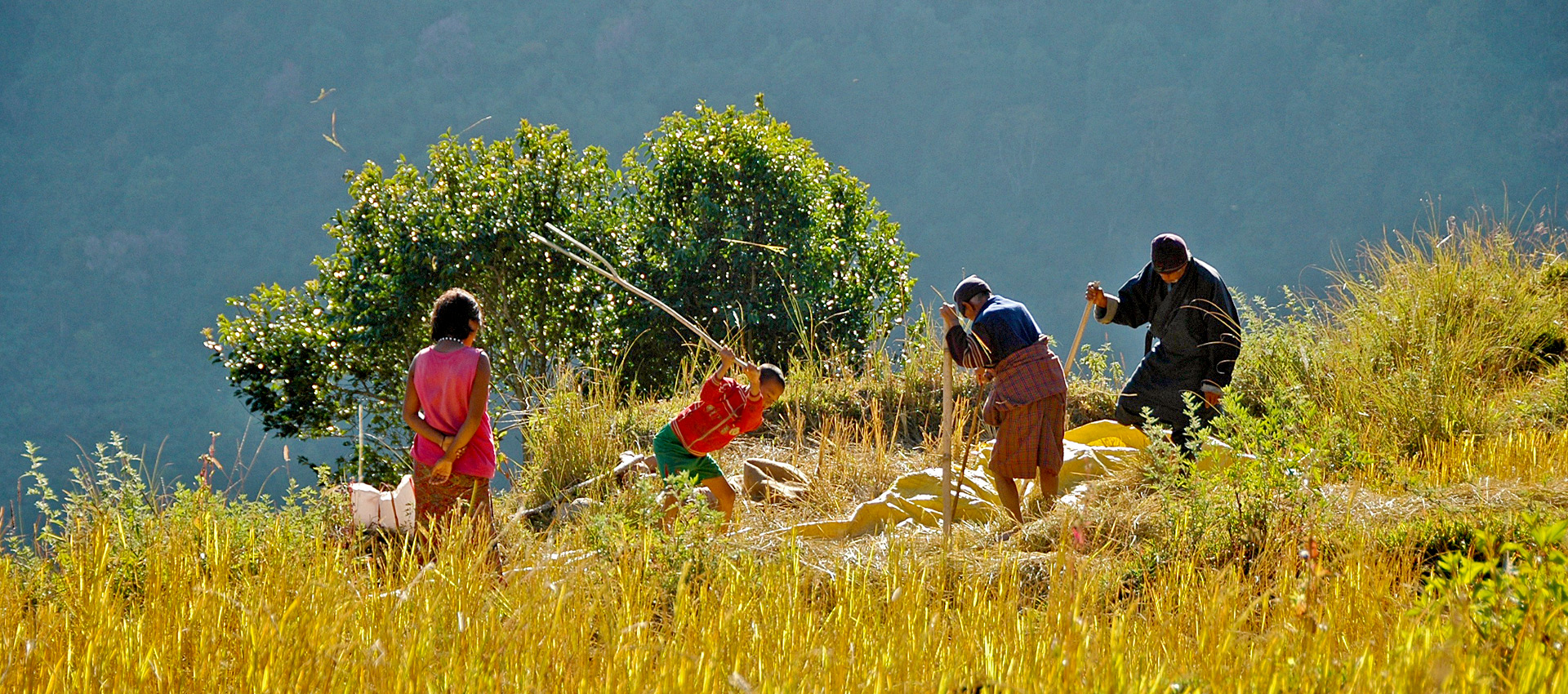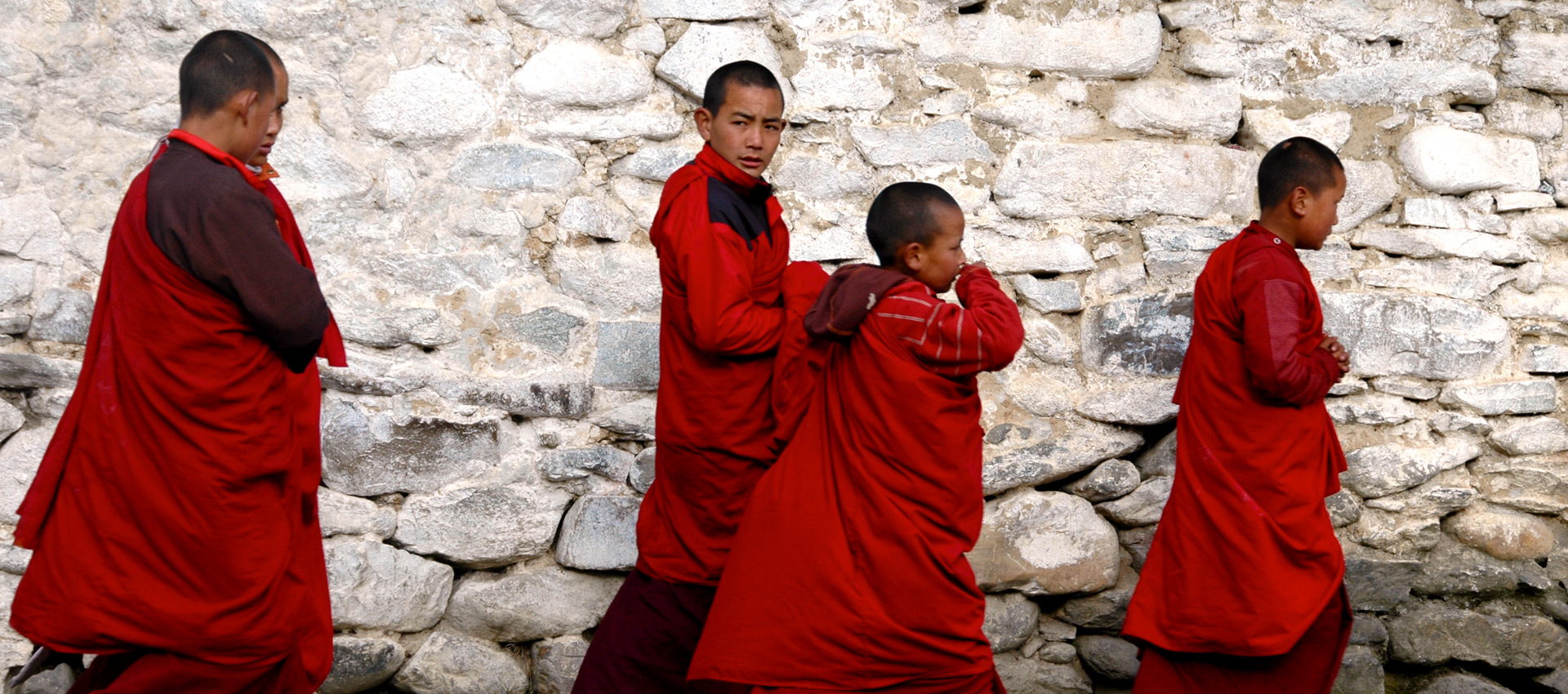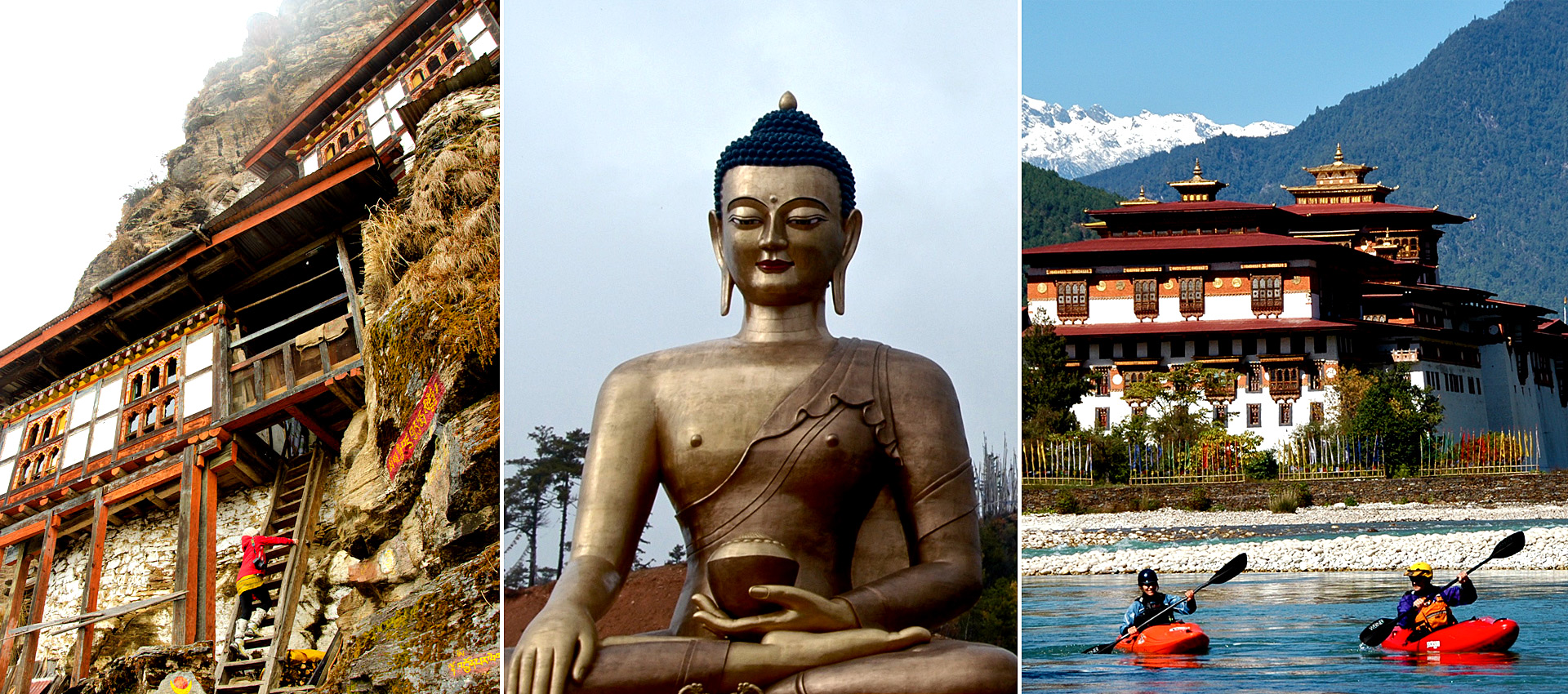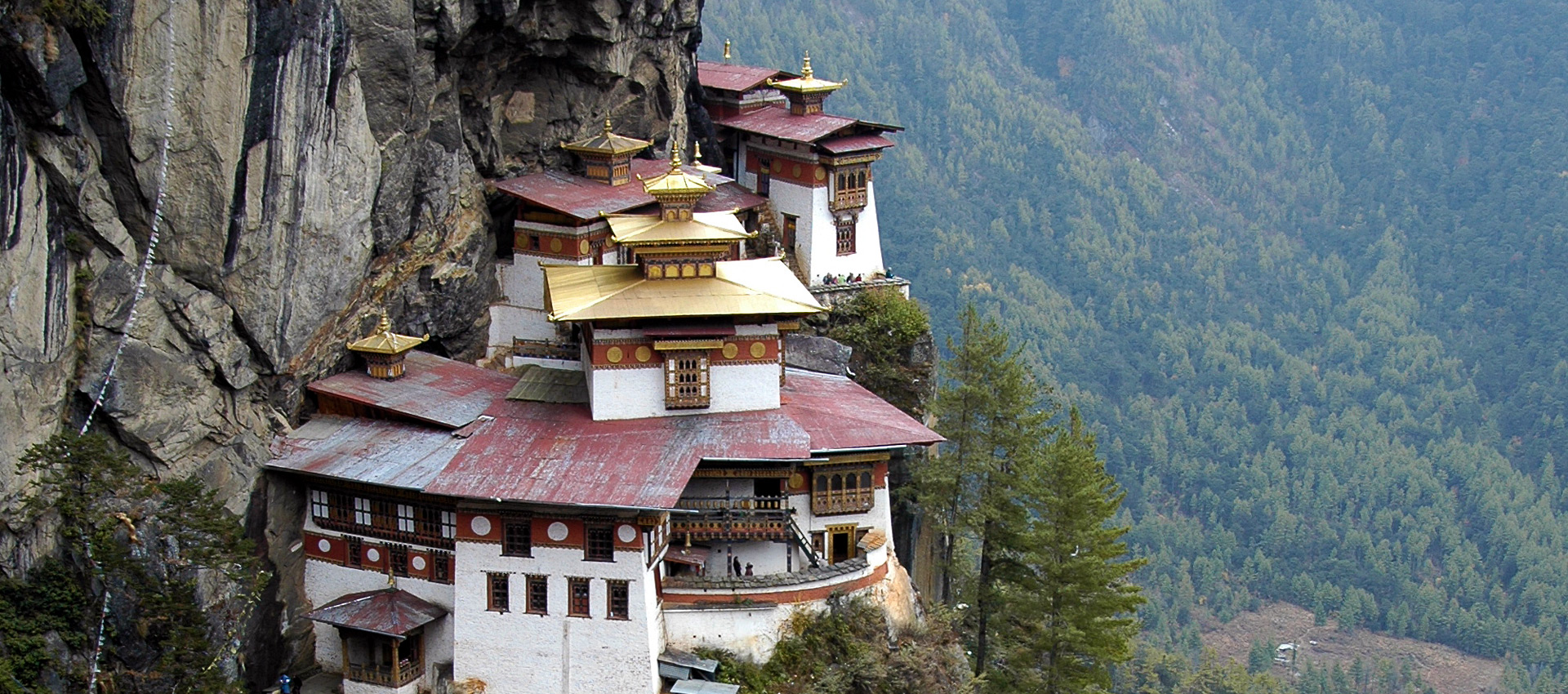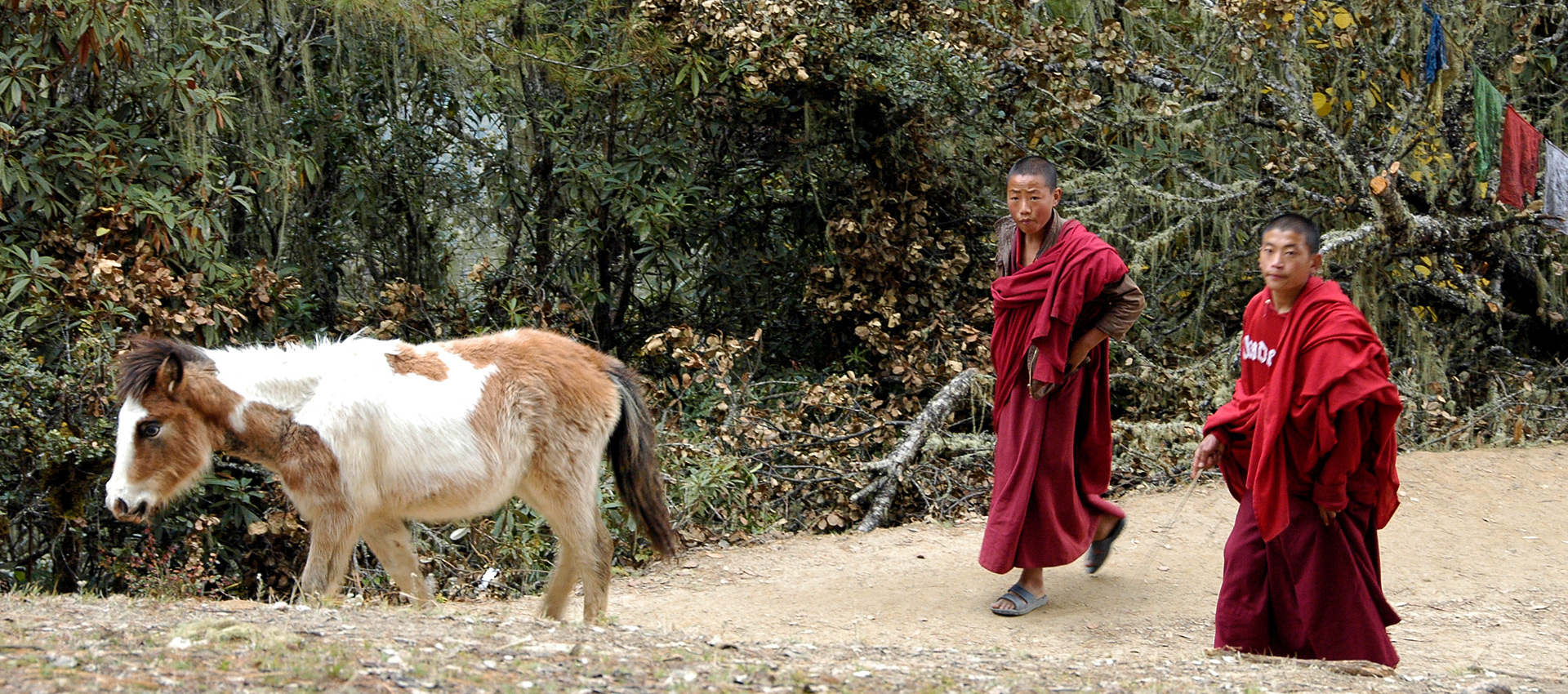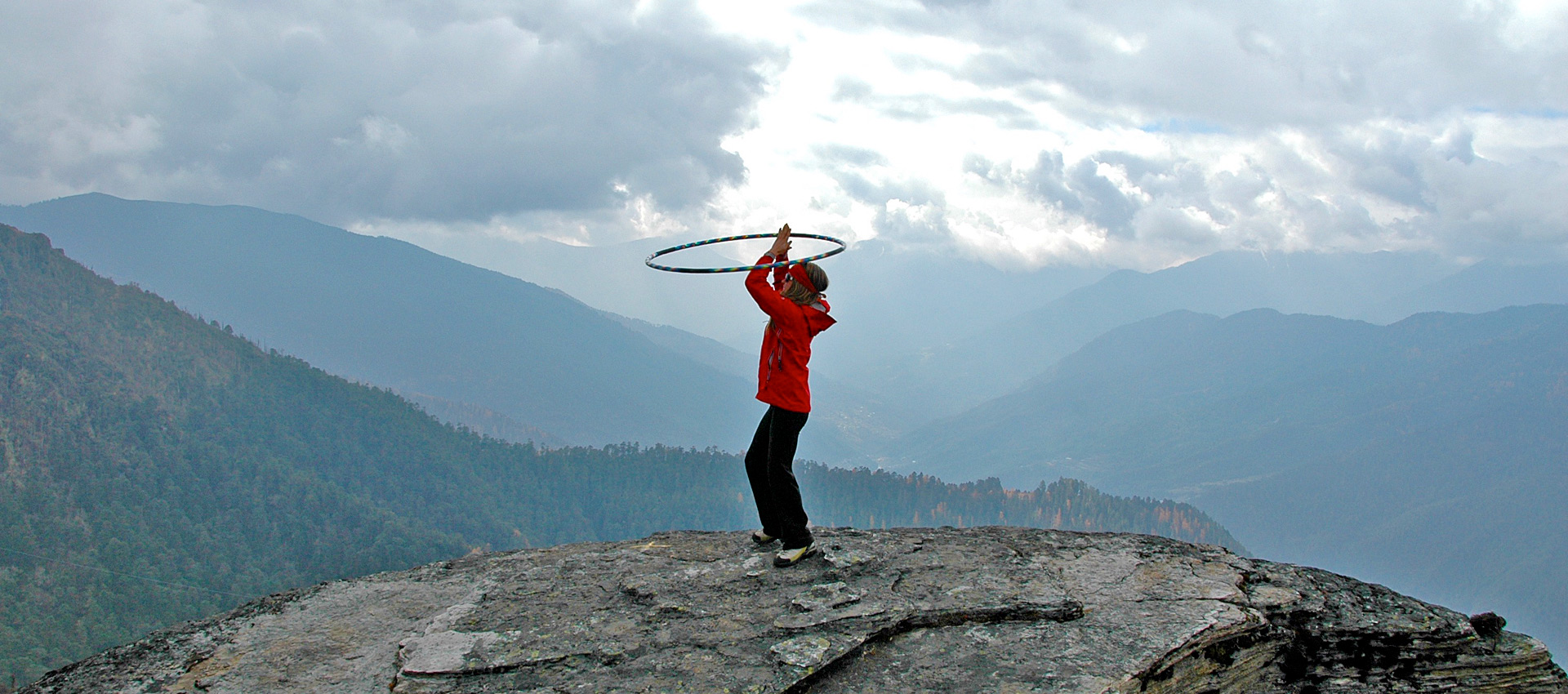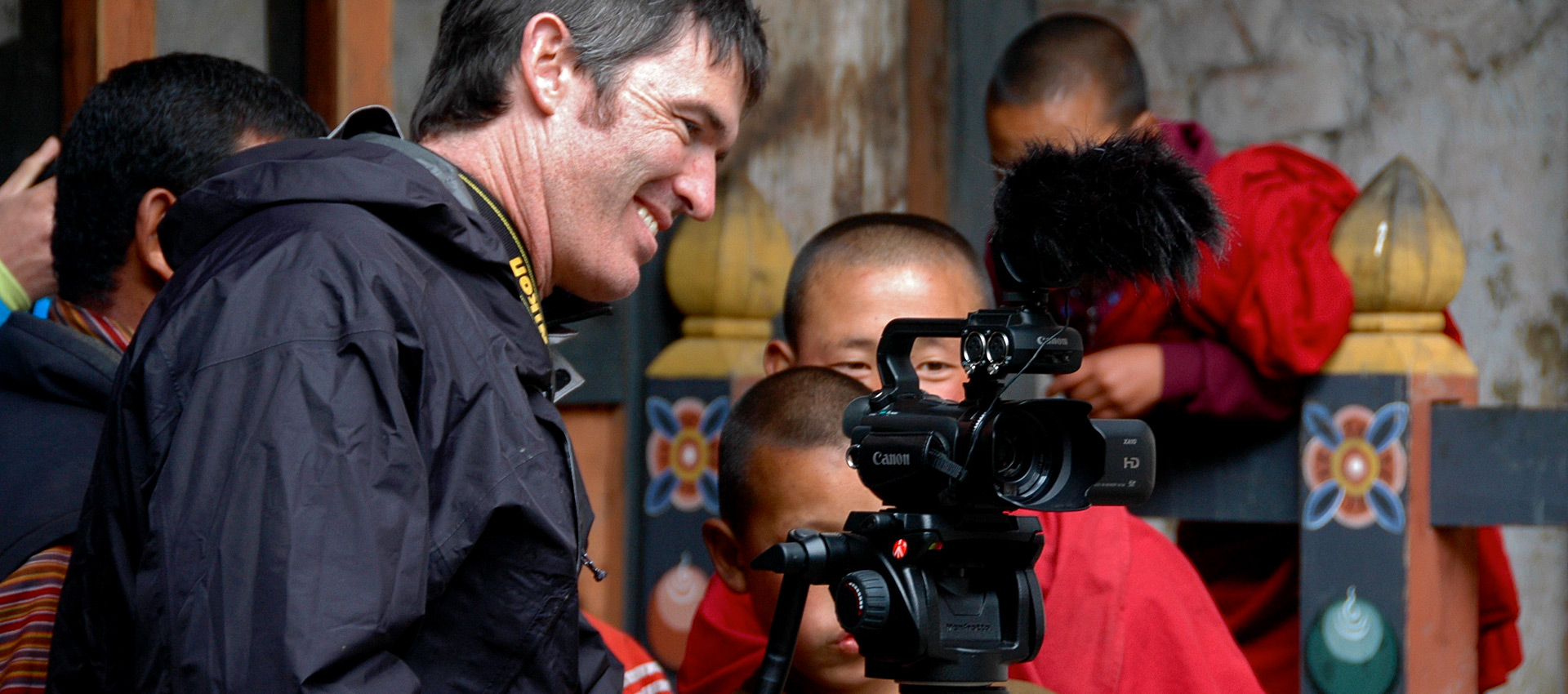11 Days of Lodge-based Multi-Sport
$11995 USD
per person based on double occupancy
2025 Dates:
October 11 – 21, 2025
October 21 – 31, 2025
Deposit: $1000 Meeting Place: Bangkok, Thailand Gateway City: Bangkok, Thailand River Rating: Class III+ Age Range: 16 – 75
Bhutan is no ordinary place. It is the last great Himalayan kingdom, shrouded in mystery and magic, where a traditional Buddhist culture carefully embraces global developments.
Low Volume, High Value Tourism
The Bhutanese pride themselves on a sustainable approach to tourism in line with the philosophy of Gross National Happiness. ROAM takes it all up a notch further and utilizes the best guides and hotels that offer sensibility and comfort blended with authenticity. We travel in small groups allowing us to craft your own itinerary.
Surprising Bhutan
Bhutan holds many surprises. This is a country where the rice is red and where chilies aren’t just a seasoning but the main dish. It’s also a deeply Buddhist land, where monks check their smartphones after performing a divination, and where giant protective penises are painted beside the entrance to many houses. Yet while it visibly protects its Buddhist traditions, Bhutan is not a museum. You will find the Bhutanese well educated, fun loving and well informed about the world around them. It’s this blending of the ancient and modern that makes Bhutan endlessly fascinating.
The Last Shangri La?
So why spend your money to come here? Firstly, there is the amazing Himalayan landscape, where snow-capped peaks rise above shadowy gorges cloaked in primeval forests. Taking up prime positions in this picture-book landscape are the majestic fortress-like dzongs and monasteries. This unique architecture sets the stage for spectacular tsechus (dance festivals) attended by an almost medieval-looking audience. Then there are the textiles and handicrafts, outrageous archery competitions, high-altitude trekking trails, and stunning flora and fauna. If it’s not ‘Shangri La’, it’s as close as it gets.
Environmental Credentials
Environmental protection goes hand in hand with cultural preservation in Bhutan. By law, at least 60% of the country must remain forested for all future generations; it currently stands above 70%. Not only is Bhutan carbon neutral, but it actually absorbs more carbon than it emits! For the visitor, this translates into lovely forest hikes and superb birding across a chain of national parks. Whether you are spotting takins or blue poppies, trekking beneath 7000m peaks or strolling across hillsides ablaze with spring rhododendron blooms, Bhutan offers one of the last pristine pockets in the entire Himalaya.
Itinerary at a Glance
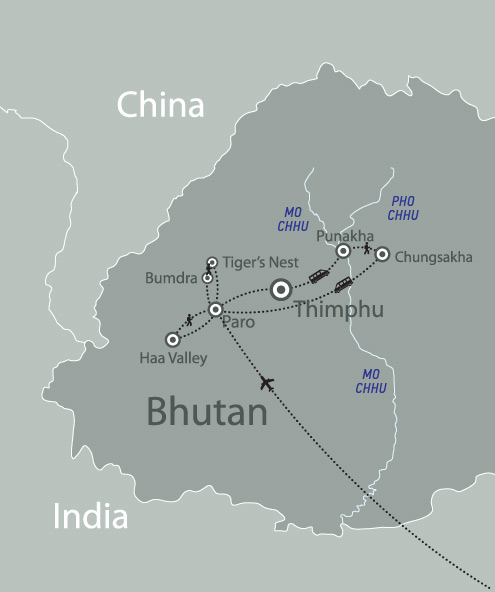
- Visit Dochu La Pass and optional cycle downhill for almost 6000 vertical feet
- Tour Temple of the Divine Madman, textile an folk heritage museums, Tashichho, market and world largest Buddha
- Relax in our deluxe tented safari camp on the banks of th Mo Chhu River
- Raft, kayak, hike or mountain bike the Pho Chhu and Mo Chhu river valleys
- Optional paddle of Paro Chhu river
- Trek to Limbukha and Chungsakha
- Sightsee in Paro, Thimphu, visit Chele La Pass for biking/hiking to a nunnery and sky burial
- Trek to Bumdra and overnight below Cave of a Thousand Prayers
- Trek to the Tiger’s Nest
- Wrap up night in Paro at Zhiwa Ling, Paro’s most authentic top-tier hotel
Package Includes:
- Flights : BKK-PBH-BKK (Economy). Upgrade to Business Class additional US $150 and subject to availability at the time of booking confirmation
- All Bhutanese Government Visa Fees, Taxes and Royalties
- All activities as outlined in itinerary
- Accommodation on a full board basis throughout (excluding beverages, laundry, tips & gratuities and any other personal expenses) at standard/deluxe lodges/hotels, safari camp in Punakha or while on Trek and 1 night at Zhiwaling. Rooming will be based on twin/double occupancy
- An experienced English-speaking Bhutanese Guide.
- Entry permits and fees.
- All in-country transport including airport transfers.
- Bottled water on all days in vehicles
What to Expect on the Bhutan Explorer
DAY 1 – Arrival at Paro International Airport. Transfer to Thimpu and sightseeing around Thimphu.
Your local guide will receive you at the airport and accompany you for the scenic drive along the Paro Chhu and The Wang Chhu passing countless traditional farmhouses and fine examples of traditional Bhutanese architecture on the way to Thimpu. The drive takes about an hour but those wishing to test their hand at continuous class III-IV whitewater kayaking will enjoy the Paro Chhu’s steady drop in elevation and technical drops.
The capital city of Thimphu is a lively town where the old traditional ways are trying to survival and co-exist with the emergence of modern and western ways of life. After we check in at the hotel, sightseeing begins. Some of the sites to visit in and around Thimphu will be The National Memorial Chorten, Tashichho Dzong, the National Textile Museum, the Weekend Market, the Folk Heritage Museum, or a quick visit to Kuenselphodrang where the world’s largest sitting Buddha is located.
DAY 2 – Saturday Punakha Valley via Dochu La, Chimmi Lhakhang
Late morning we head towards the Punakha Valley. We’ll lunch a the top of Dochu La Pass (3140m) where on a clear day one gets a panoramic view of the eastern Himalayan range. Those wanting to mountain bike down to the valley will be treated to 6000 vertical feet of winding road and climatic changes as you descend into jungle-like conditions.
Once in the valley bottom, we will take a short walk across a couple of village homes and rice paddies to Chimmi Lhakhang; aka “Temple of the Lam Drukpa Kuenley – The Divine Madman”. Duration of drive time: 3 hours (76km) Tonight we will overnight at Buddha Camp on the banks of the Pho Chu River in Punakha
This deluxe safari tent camp is reminiscent of our tent camps in Africa. The surrounding 20 acres are beautiful and have orange and banana tress throughout the grounds and magnificent 360-degree mountain views. Most importantly it’s very private and ideally situated for exploring the region.
DAY 3 – Hike, Raft (or bike) and Punakha Dzong
After a gourmet breakfast we have some options to raft the upper and lower Pho Chu canyon and/or ride some extended single track in the same valley (joining the rafts in the afternoon for the lower Pho Chu’s class II/III section). The mountain bike ride rolls through pine forests, small local villages, and paddy fields until you reach the put in for the lower Pho Chhu at Samdenkha.
The scenic raft trip down the lower Pho Chhu takes about 2 to 2 ½ hrs with stops and ends with a classic float past the majestic Punakha Dechenphodrang Dzong located at the confluence of the Pho Chhu and Mo Chhu rivers. The Punakha Dzong is a true a masterpiece of Bhutanese architecture built in 1637 by Shabdrung Ngawang Namgyal. Today the dzong serves as the seat of the local government and the winter home of His Holiness the Je Khenpo, the head abbot of Bhutan.
Overnight Buddha Camp.
DAY 4 – Raft, or Bike, Hike, Sightseeing
Drive to the put in of the class III/IV section of the Mo Chhu and raft the scenic canyon of the upper Mo Chhu down to base camp. Lunch at the take out. After lunch short hike through homesteads and farmlands to the Khamsum Yulley Monastery; a temple built by Her Majesty the Queen Mother for the long life of His Majesty the 5th King of Bhutan. If time permits a nice scenic drive and visit to the Sangchhen Dorji Lhuendrup Lhakang which was consecrated in October 2010 and houses one of the biggest statues of Avalokiteshvara – “The Buddha of Compassion”.
Overnight Buddha Camp.
Day 5 – Trekking to Limbukha
Today’s trek starts just beyond the Punakha Dzong as we cross the longest suspension bridge in Bhutan, which runs over the Pho Chhu River where we rafted the day before. The first part of the climb is gentle and gradual as we hike through terraced fields. After a couple of hours of walking through pine forests we stop for lunch and enjoy outrageous views of the Punakha Valley and Himalayas. At the end of the day we will have reached the village of Limbukha and tonight’s remote wilderness camp complete with dining tent and fantastic Bhutanese hospitality.
Day 6 – Trekking to Chungsakha
The hike starts off steep until you reach the first ridge. Crossing into a different valley and over several streams, the hike goes through oak and more rhododendron forests. The final descent takes us into the quaint village of Chungsakha where we meet our drivers and shuttle back to Phobjikha for a little sight seeing and exploration. There will be an option for people to mountain bike back as well.
DAY 7 – Sight seeing and transfer to Paro
Morning drive to Paro. Visit Rinpung Dzong, Ta Dzong, Paro Town & Kyichu Lhakhang . Visit the Ta Dzong, which houses the National Museum (open Tuesday-Saturday) with magnificent views over Paro, and on the way down visit Rinpung Dzong – ‘Fortress on a Heap of Jewels’. Also visit the Kyichu Lhakhang one of the oldest temples in Bhutan and was built in the 7th century by the Tibetan emperor Songtsen Gampo and is one of the 108 temples built by him. In the later part of the afternoon one can spend time trying out the local sport of Archery with traditional bows and arrows.
Day 8 – Chele La Pass and hike to Kila Nunnery
Today we will have an early start as we drive to Chele La Pass, which at 3988m (12499 ft) is the highest road pass in Bhutan, snaking upwards through blue pine and rhododendron forests for 35 kilometers. On a clear day the view sweeps away to the snow dome of Bhutan’s second highest peak Mount Jhomolhari (7314m or 23,996 feet)) and down the Haa Valley which only opened to foreigners in 2002. This unspoiled valley harks back to a simpler more traditional time. This valley offers Bhutan’s best fly fishing for snow trout and brown trout.
Striding out along the Edelweiss-covered ridge, we pass a sky burial site. Descending for two hours through dense rhododendron forest and shaggy yaks, to Kila Goemba, an ancient nunnery nestled in a craggy patch of the mountainside below. Kila Goemba is a serene retreat for 32 Anim (Buddhist nuns) who lead an undisturbed life of religious studies, prayer and meditation. The nunnery is one of the seven oldest nunneries in the Kingdom. Dipthob Chhoeje Norbu and Dupthop Temba initially established it in the early ninth century as a place for meditation, After being destroyed by a fire , the Lhakhamng was reconstructed by the 25th Je Khenpo, Sherab Gyaltsen and in 1988, the government officially established Kila Goenmba (monastery). This sacred pace has a timeless quality which is ample reward after the efforts of the hike and as about as far off the beaten path one can get.
An hour later, we are back on the road and bikers can saddle up for a mountain bike descent of epic proportions all the way down to the to Paro Valley.
DAY 9 – Trek to Bumdra
Hike from Sang Chhoekor Monastery to a yak pasture below Bumdra (“Cave of a Thousand Prayers) at 3800m. The first 2-hour ascent up a ridge is steep at times and then brings us to a clearing with spectacular views of the Paro Valley below. About an hour ahead nestled into the mountainside is Chhoe Tse Lhakang. The undulating trail up to the temple offers commanding views of the Paro Valley to the south and snow-capped Eastern Himalayas to the North. The final climb through prayer flags and ruins takes us back into a forest and then out to a high altitude alpine meadow dotted with chortens and prayer flags.
Tonight’s camp is just below the Bumdra Monastery and offers magnificent views of the Himalayan range. Your tents will be set up for you and we will have a walled tent dining hall along with portable privy. Hot water will be available for washing up before a surprisingly delightful dinner. After settling into camp we can either visit the monastery if the caretaker is available and also climb the peak to the north (about 4000m) for even better views of the mountains
Duration: Approx 4-5 hours to camp Difficulty: Moderate to Hard Overnight: Camp at Bumdra
DAY 10 – Trek to Tiger’s Nest
Trek from the meadows below Bumdra Monastery at 3800m via Zangtopelri Monasteries to Taktsang Monastery aka “Tiger’s Nest” at 2900m and back down to Paro
After breakfast, linger awhile and enjoy the breathtaking views before heading back out onto the trail through pine and rhododendron forests. A two-hour descent lets us catch glimpses of the roofs of some temples below. The path then winds across the mountainside between the monasteries and temples before reaching the gardens of Zangtopelri from where you can see the roofs of the Taktsang Monastery perched on a cliff below.
This backdoor approach to the Tiger’s Nest is not your usual tourist route and is well worth the effort. Another half hour of scrambling and a dramatic climb down some old ladders sets the stage for an amazing view of Taktsang Monastery aka The Tiger;s Nest. After an incredible visit we will work our way down the more traditional trail head to reach our shuttle
Duration: 5 – 6 hours depending on time taken in monasteries Difficulty: Moderate – Although not very comfortable, riding ponies are available upon request. Overnight: Zhiwaling
DAY 11 – Departure
Morning drive to the airport to catch your flight out of Bhutan
Accommodations
Zhiwa Ling Heritage
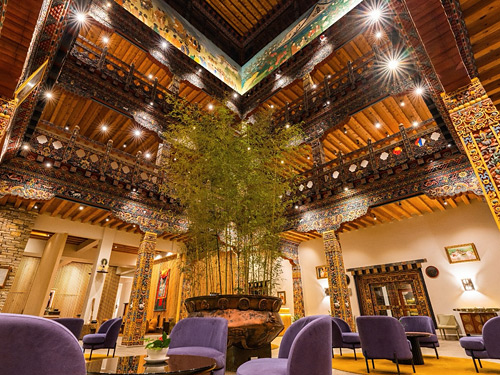
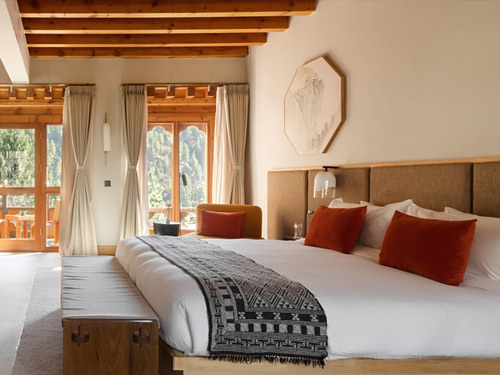
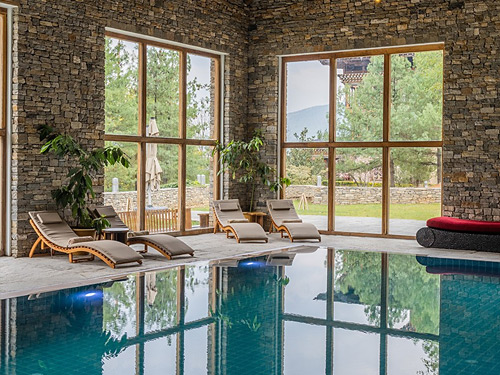
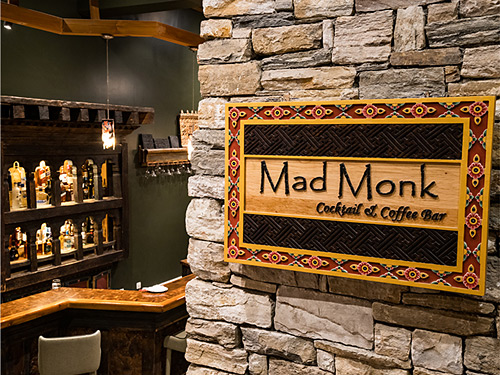
Escape the ordinary and immerse yourself in the genuine warmth and comfort of Zhiwa Ling Heritage, a 5-star hotel seamlessly integrated with nature, culture, and tradition. Nestled in the charming valley of Paro, Zhiwa Ling Heritage offers a truly exceptional experience, enhancing every aspect of your trip.
Le Méridien Paro, Riverfront
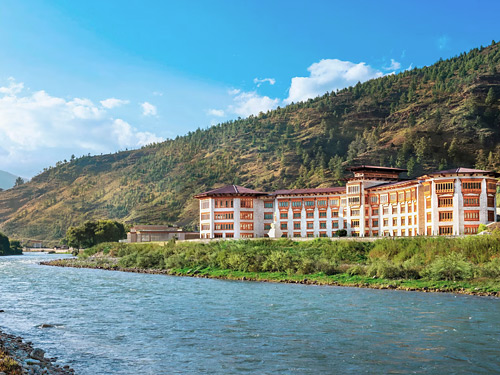
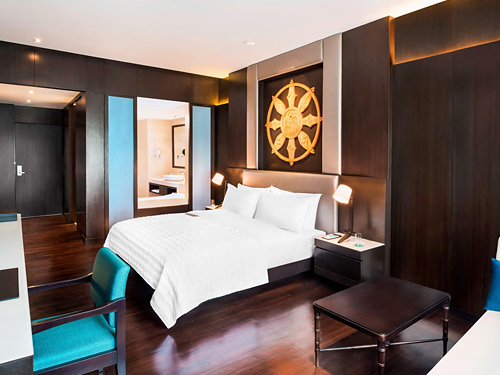
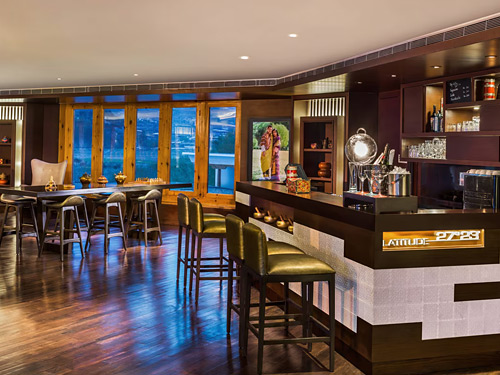
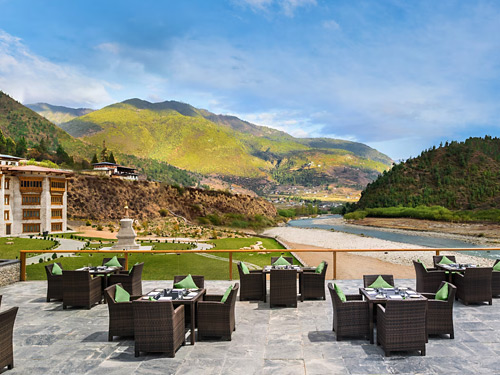
Located on the banks of Par River, this luxury hotel provides a spa, an indoor heated pool, sundeck and a river-facing fitness center. Two restaurants, Bamboo Chic and Latest Recipe, offer sensorial dining. Each room looks out upon the Himalayan Valley and Paro River.
Le Méridien Thimphu
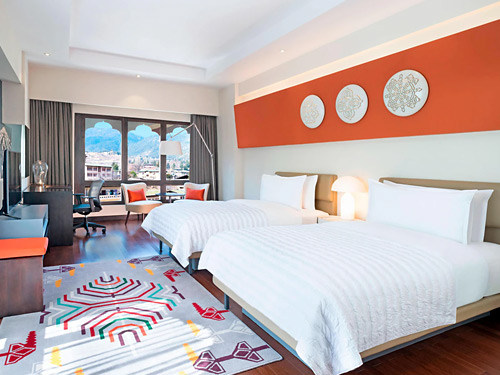
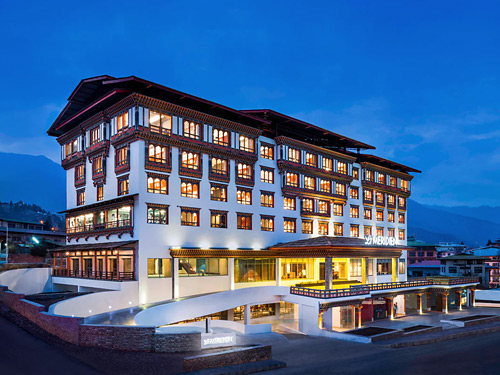
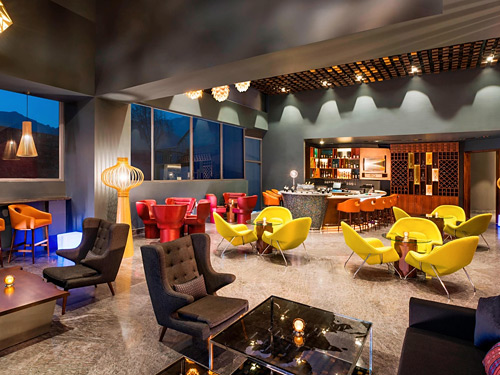
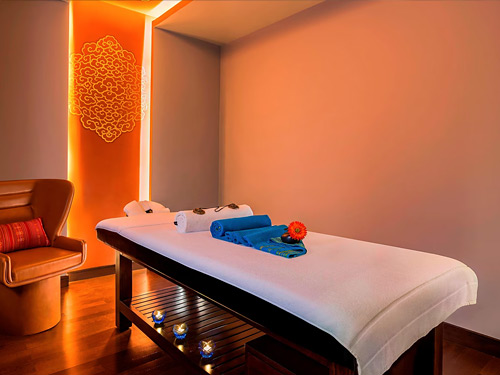
Located in the heart of Bhutan’s capital city, this luxury hotel is within walking distance of shops and entertainment, with short drives to celebrated attractions such as Tashichho Dzong. Guestrooms boast authentic Bhutanese-style furnishings and luxury hotel amenities and uncompromising views of Thimphu city and local geography.
Buddha Camp
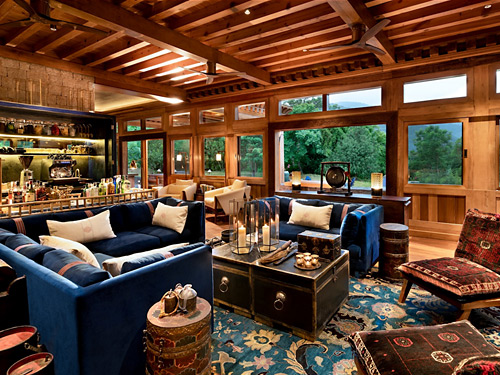
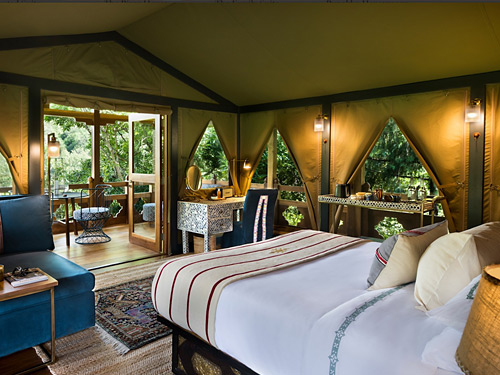
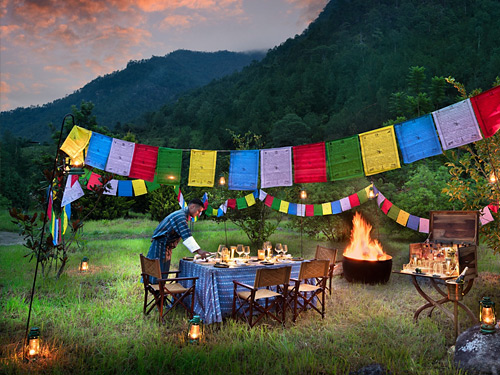
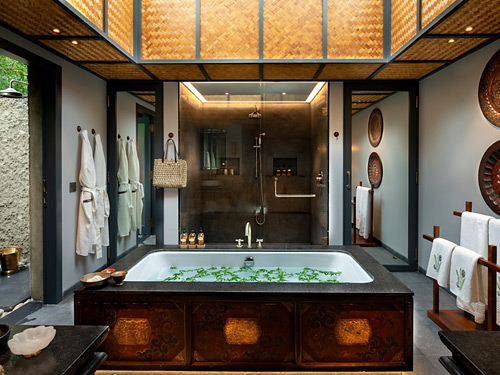
Tucked deep in the lush green Punakha Valley and draped on the banks of the Mo Chu river, this spectacular lodge offers six intimate luxury tents, a one-bedroom suite, and a two-bedroom suite. Intricately crafted, the lodge has been created in the traditional Bhutanese architectural style and is in perfect harmony with the surrounding terrain.
About the Region
Why Bhutan? And…where IS that anyway?
After the plane makes its steep descent along the Himalayas it touches down in Paro Valley (2280m) and you might feel like you have entered a world you only hoped had existed.
Bhutan, officially the Kingdom of Bhutan, is a landlocked state in South Asia, located at the eastern end of the Himalayas and bordered to the south, east and west by the Republic of India and to the north by the People’s Republic of China. Bhutan is separated from the nearby country of Nepal to the west and from Bangladesh to the south by the Indian states of Assam and West Bengal.
The capital city of Thimphu (2320m) has a youthful exuberance and the mix of traditional and modern are an essential part of its charm.
The drive from Thimphu to Punakha, along the National highways and over the Dochu La, leads from the cool heights of Thimphu to the balmy, lush landscape of the Punakha Valley. The route climbs through apple orchards and forests of blue pine to the Dochu La (3140m) marked by an impressive amount of prayer flags and 108 chortens (receptacles for offerings). On a clear day, the pass offers panoramic views of the Bhutan Himalayas. The road descends steeply and the vegetation changes dramatically from oak, maple and pine to rhododendron, alder, cypress, hemlock and fir. The air gets warmer and the environment increasingly tropical with the appearance of cactus and bamboo.
Punakha sits in a sultry, beautiful and fertile valley at the junction of the Mo Chhu (mother River) and Pho Chhu (Father River). The gorgeous Punaka Dzong takes its throne at the confluence of these two rivers. Here we have a chance to break out the water-wear and fat tires as there are numerous rivers to raft or kayak and bike trails to enjoy no matter what your ability.


